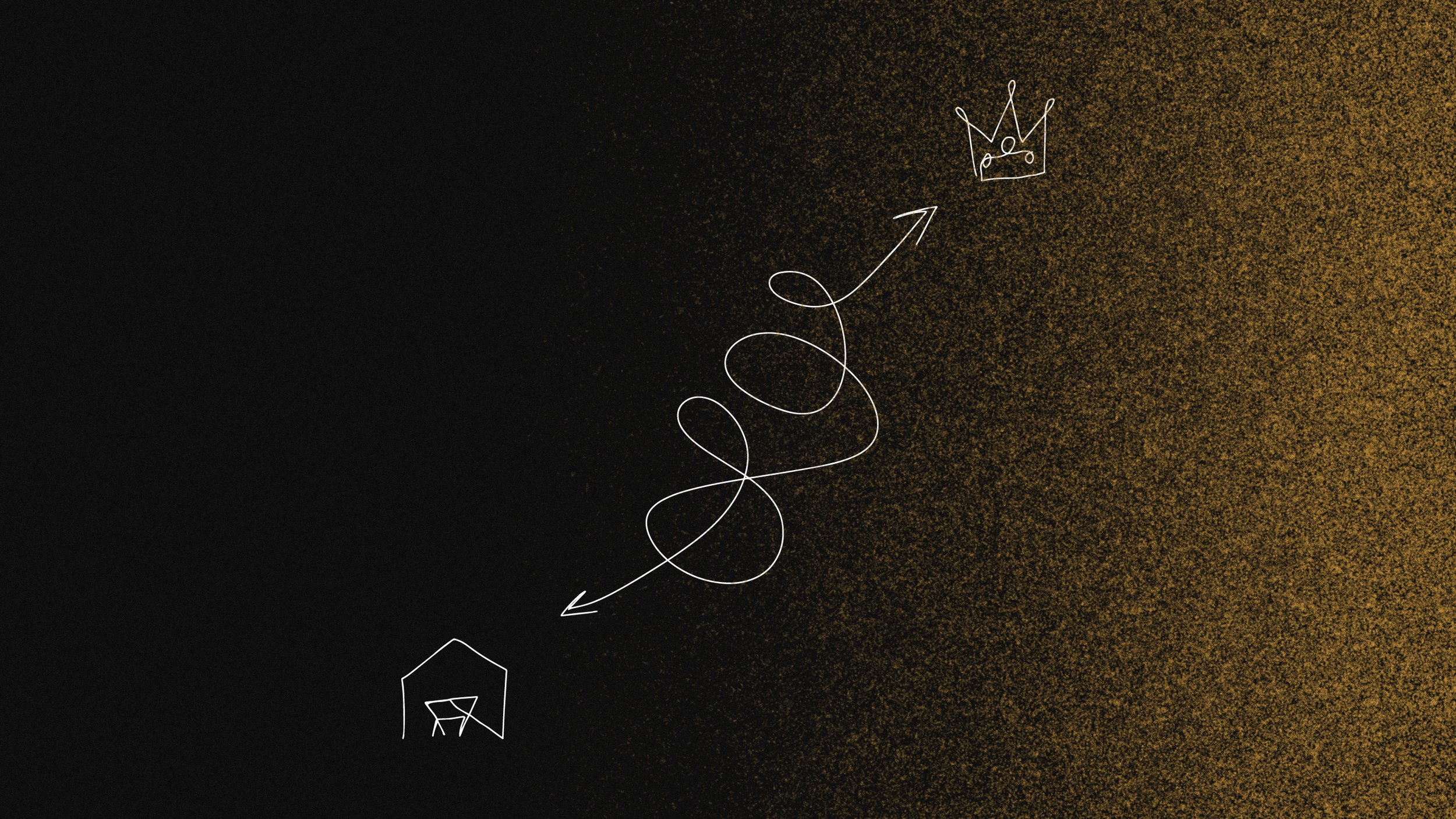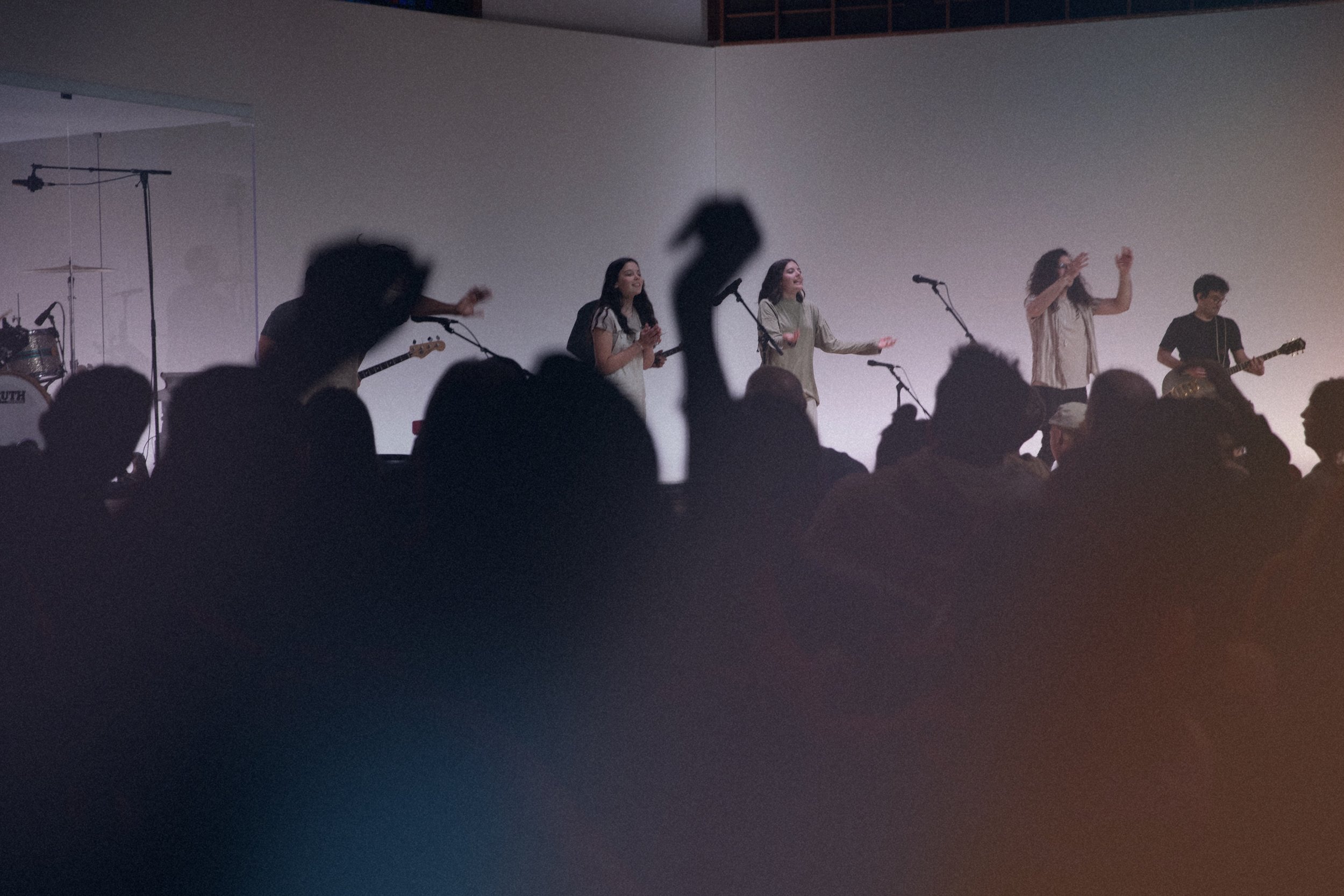Music
Bridgetown Music aims to help people be with Jesus, become like Jesus, and do what Jesus did; primarily through the use of music in corporate worship gatherings, which we believe is a means to the greater end of living lives of worship to God.

Come (Again)
Single out now!

Christ has come and he will come again
Come (Again)
Resources
Reflection Guide
Whether it’s a breakthrough or healing, a job or pregnancy, a reconciliation or the end of war, it seems as if our lives and our world are in constant waiting. As the people of God, we are not unfamiliar with waiting - that is a major theme of the season of Advent. During Advent we relive the story of God’s people waiting for the Messiah to come and acknowledge our present waiting for the Messiah to come again. On Christmas Day we celebrate the arrival (or advent) of Jesus, Emmanuel, God with us.
Come (Again) is a song to sing in the waiting and rejoicing. It was written to live in the tension of celebrating what is, while longing for what is yet to come.
This song is a journey. The verses invite us to wonder at Christ’s birth, the pre-chorus calls us to respond in worship, and the chorus echoes the simple Biblical refrain: Hallelujah. As an exercise, consider swapping out the Hebrew word Hallelujah for its English translation Praise the LORD. As you do, the song may begin to sound and feel like a psalm: “Praise the LORD / He has come / Praise the LORD / our Savior is born / Christ has come / and He will come again!”
The book of Psalms is filled with refrains that teach us to insist our souls to worship, even when we feel reluctant, to praise the LORD in spite of circumstances or feelings. Come (Again) carries this same invitation. We command our souls to praise by remembering that what God has done, God will do again. Praise is a way that we live in the waiting between Jesus’ first and second advent.
In the bridge when you sing “Glory to God in the highest, peace on earth” it is not just a proclamation; it’s also a plea. You sing along with the heavenly hosts declaring all that is true, while longing and waiting for that truth to ring out across the whole earth. But we do not wait without hope, for we know that the One who promised to is faithful.
In any good story, especially the true ones, people journey from conflict to cliffhanger to climax to final resolution, ultimately because of hope. When we worship we cultivate within ourselves the capacity for joy in seasons of longing and fuel our hope. This is a hope that will not disappoint and a joy that will be satisfied by the fulfillment of Christ’s final promise: “Behold, I am coming quickly!”
A note on the artwork: Much like the song, the artwork is designed to tell this story as well. It begins centered on the word “again” in parenthesis. Looking deeper, the colors and textures gradually transform from the black to gold and from darkness to light. There are also symbols representing Christ's two advents—a manger for his first and a crown for His second. Finally, there is a line journeying between the two symbols, representing the winding wait in which we exist between the two advents. (You may consider taking a moment to pause and reflect on what this art may mean for where you are in this story.)
Questions to Consider and Journal:
What does the difference between Advent and Christmas mean for your life story?
What is your default posture or reaction to corporate worship?
What does it look like for you to sing to God as an act of the will in this season?
What does or could the practice of singing praise to God do in you?
Discussion for Families:
What does Christmas mean to you?
What does Advent mean to you?
What does the practice of singing praise to God do in us?
What is your favorite worship song?
Scriptures to Meditate on or Memorize: Luke 2v1-14, Revelation 22v12-21, Psalm 113, Psalm 150
Practice: One way to embody this song is to try writing your own psalm of praise to God (similar to Psalm 113 or Psalm 150). Then, set a timer for 3 minutes each morning and evening for a week. During these 3 minutes, be still and wait with your hands open. If it helps, you could even quietly pray, “Come, Lord Jesus.” Then, after the timer ends, pray the psalm you wrote. At the end of the week, take some time to reflect on what God did in you through this practice, and consider continuing it in some way.
Practice Ideas for Families: There are a few ways to embody this song as a family. One idea is to write your own psalms of praise to God together and pray them out loud before dinner. Another idea is to draw or paint a picture of Jesus coming as a baby and then one of Jesus coming again as a king.
Chord Charts
Download chord charts and lyrics for Come (Again).

I just want to be
like him
Be Like Him
Resources
Reflection Guide
Instructions: Take a moment to pause and bring yourself to stillness. Listen to Be Like Him while meditating on the piece of artwork, then work through the below questions and practice.
The Scottish writer and politician Andrew Fletcher is attributed saying, “Let me make the songs of a nation, and I care not who makes its laws.” He understood that songs powerfully work in people at an almost subconscious level. Maybe that’s why songs have been used to do everything from teaching children the alphabet, to energizing a soccer team, to galvanizing military troops. Songs can change environments, form hearts, and shape communities. Be Like Him is meant to do just that. It is a song of worship but not in the sense that it praises or adores God. This song runs in a tradition similar to Psalm 1 where the worshiping community is invited to make a decision about who they will become through poetry and song. To join into the people of God is to be like a tree planted by rivers of living water (referenced in the artwork) that over the seasons of life will produce fruit.
Notice the progression of the verses. The first verse metaphorically begins at sunrise and names the intention for the day - to follow Jesus. The second verse looks out the window and sees that the idols and gods of the city overpromise and underdeliver. The third verse is a declaration of intent to live out the deepest desire of faithfulness to Jesus over the often more immediately appealing desires that the worshiper is confronted with each day.
The song is a conversation between God, the worshiper, and the worshiping community. The song is a confession, petition, and declaration all at once. She verbalizes the temptation to live for things, pleasure, riches, endeavors, and distractions. She knows that these things have formed and will attempt to form her. She needs mending and reforming back to her intended design like a piece of clay or metal. She’s like a ship needing to be redirected and steered toward true north.
The worshiper’s voice rises. She names reality among the illusive voices of the world, flesh, and devil. She hears the voices of other worshipers - her voice joining the communal harmonies. She gets louder, repeating and even shouting the ascending melodies “I wanna be like Him!” But then the worshiper ends her song quietly, almost like her final thoughts before bed. She repeats the verse she sang before but with slight variations to the notation. Her resolution - fidelity to Jesus, His Kingdom and His way.
Songs can change environments, form hearts, and shape communities. That’s why the end goal of worship songs is not so much that they would be sung, heard, or felt, but that they would be lived.
Questions to Consider and Journal:
Where do you find yourself in the story of Be Like Him?
Who is the worshiper singing to? Her soul, her city, other worshipers around her, God? Why do you think that and what does that mean?
What are some of your current most immediate desires? Contrast them with your deepest desires.
What does it look like in this season of your life to live out of your will and intention to follow Jesus?
Discussion for Families:
What are some ways you want to be like Jesus?
Why do we want to be like Jesus?
Is there something that Jesus said that is hard for you to do?
How can we become more like Jesus?
Scriptures to Meditate on or Memorize: Psalm 1, Romans 12.1-2, Matthew 6.19-21, Matthew 7.24-27
Practice: To embody this song, try fasting from food and praying. You can fast for a meal or a 24-hour period. However you choose to fast, use the time that you would normally be eating to pray through the themes of the above Scriptures and the lyrics of Be Like Him. If fasting from food is too upstream, try abstaining from something like entertainment or media.
Practice Ideas for Families: To embody this song, try one of the following ideas.
Draw, paint, or write prayers asking God to make you more like Jesus.
Pick one way that you want to be more like Jesus and carve out time in your family's week to intentionally practice being like Jesus in that way.
Chord Charts
Download chord charts for Be Like Him.
Phone Wallpaper
The single artwork for Be Like Him is available as a phone background.

Serve with Worship
Are you interested in serving through worship?
There are four main areas for people to serve with worship at Bridgetown:
1. Worship for Sunday Gatherings
2. Worship Choir (quarterly)
3. Auxiliary instruments for special events (i.e. cello, violin, saxophone, percussion, etc.)
4. Bridgetown Music: songwriting for the church (must be involved with worship for Sunday Gatherings to participate)






